Author: Ignas | DeFi Research
Compiled by: TechFlow
In June 2021, when ETH crashed from $4,300 to $2,150, a 50% price drop, I chose to sell all my assets.
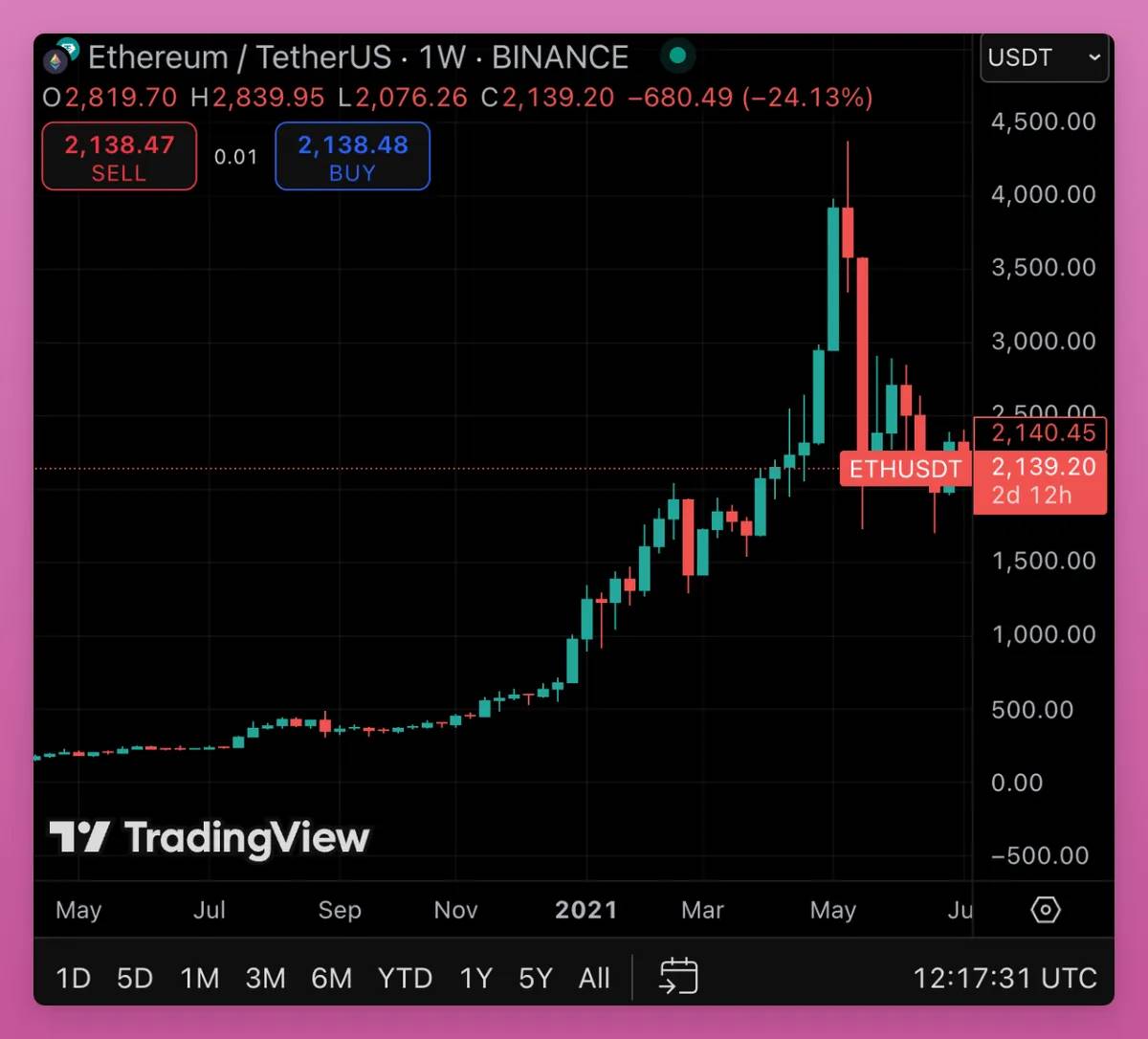
At that time, I was already exhausted by the high intensity of the bull market, and the continuous research and work had left me physically and mentally drained. I was desperately longing for everything to stop. When my portfolio shrank by 50%, I thought it was a bear market signal, so I decisively liquidated everything and felt a sense of relief.
However, the market then rebounded quickly, with ETH surging 125% to $4,800. I could only watch from the sidelines, and although I earned some returns by holding stablecoins, I missed out on this rebound.
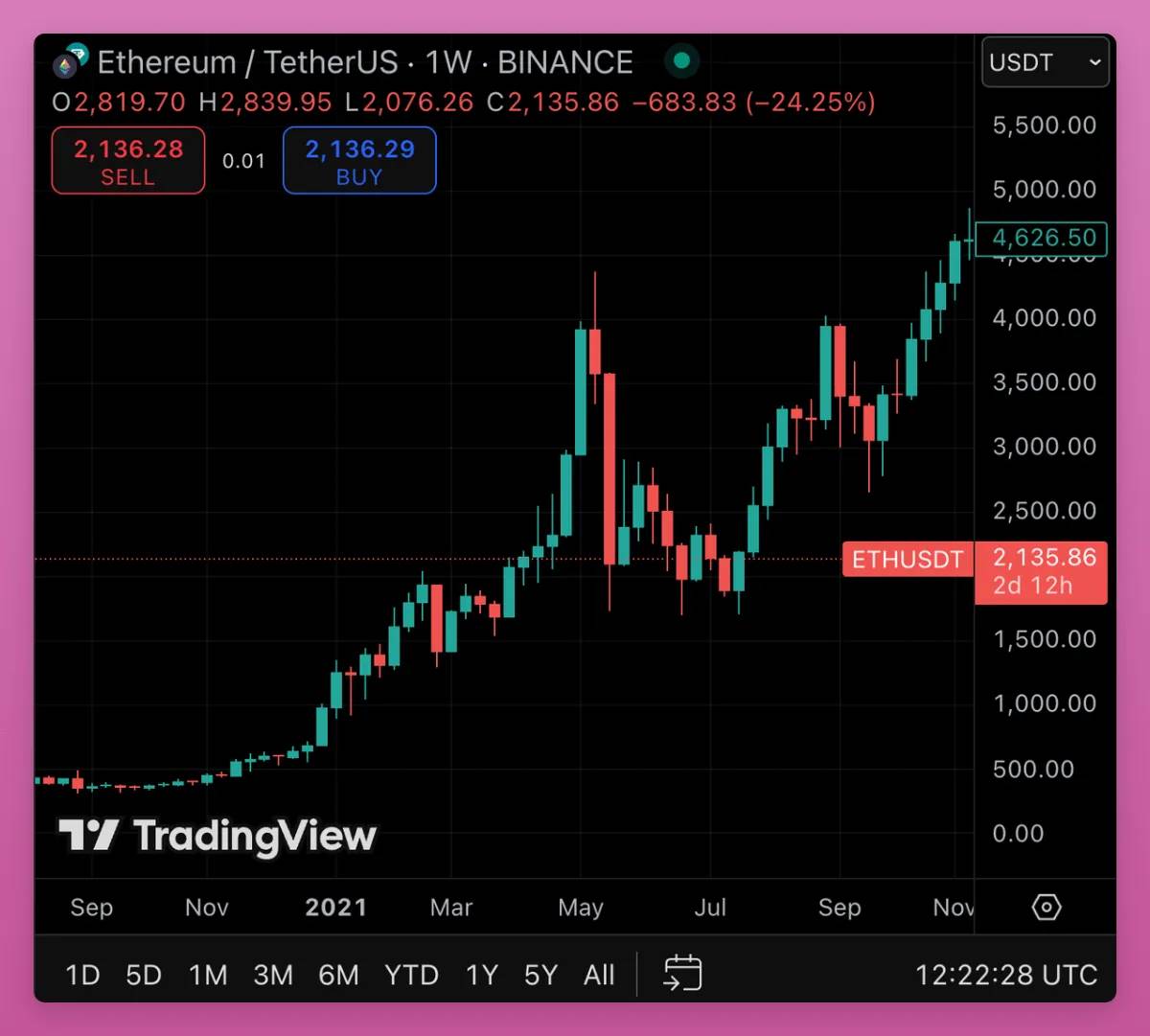
Now, I feel we are in a similar stage, but this time my mental state is stronger. I choose to hold my assets firmly and wait for the market to recover.
But what if I'm wrong? What if this is the start of a bear market?
The current market sentiment is dominated by fear: the impact of Trump's tariff policies, the stock market at historical highs that could trigger a crash, and in turn drag down the Altcoin market. At the same time, you may have noticed that Warren Buffett is holding a large amount of cash, making you wonder if he knows something we don't. "Smart people" on social media platform X are posting pessimistic predictions, claiming the market is about to collapse.
This is what's called Goblin Town (a slang term for a market crash).
Nevertheless, I choose not to be overwhelmed by these fears, uncertainties, and doubts (FUD), and hope to share some market data and insights to help everyone analyze the current situation calmly.
Is Bitcoin still in a bull market?
Here are a few indicators from CryptoQuant to help determine whether Bitcoin's price is overvalued (expensive) or undervalued (cheap).
MVRV Z-Score
The MVRV Z-Score measures whether Bitcoin's price is deviating from its historical trend, indicating if it is overvalued (red zone) or undervalued (green zone).
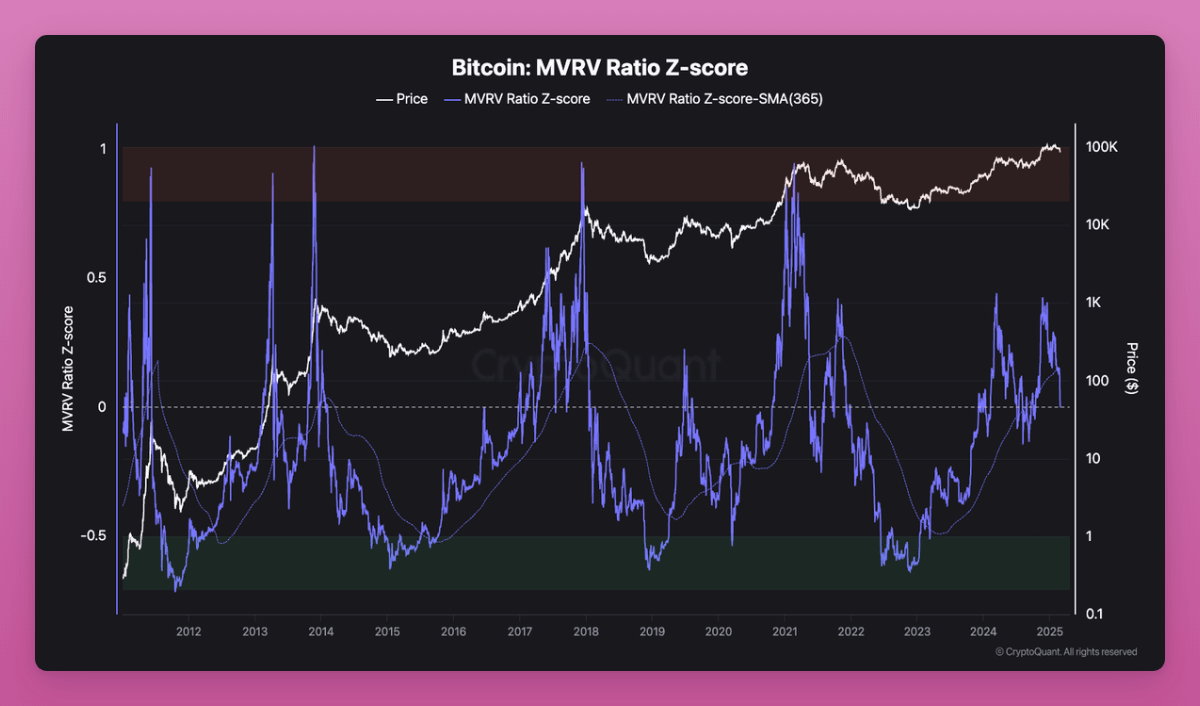
Currently, Bitcoin's price has not entered the overvalued region, but is also far above the undervalued region.
The market still has upside potential, but is currently in the mid-cycle, not the early stage.
NUPL (Net Unrealized Profit/Loss)
The NUPL indicator uses unrealized profits to gauge the market sentiment, whether it is fear, optimism, or euphoria.
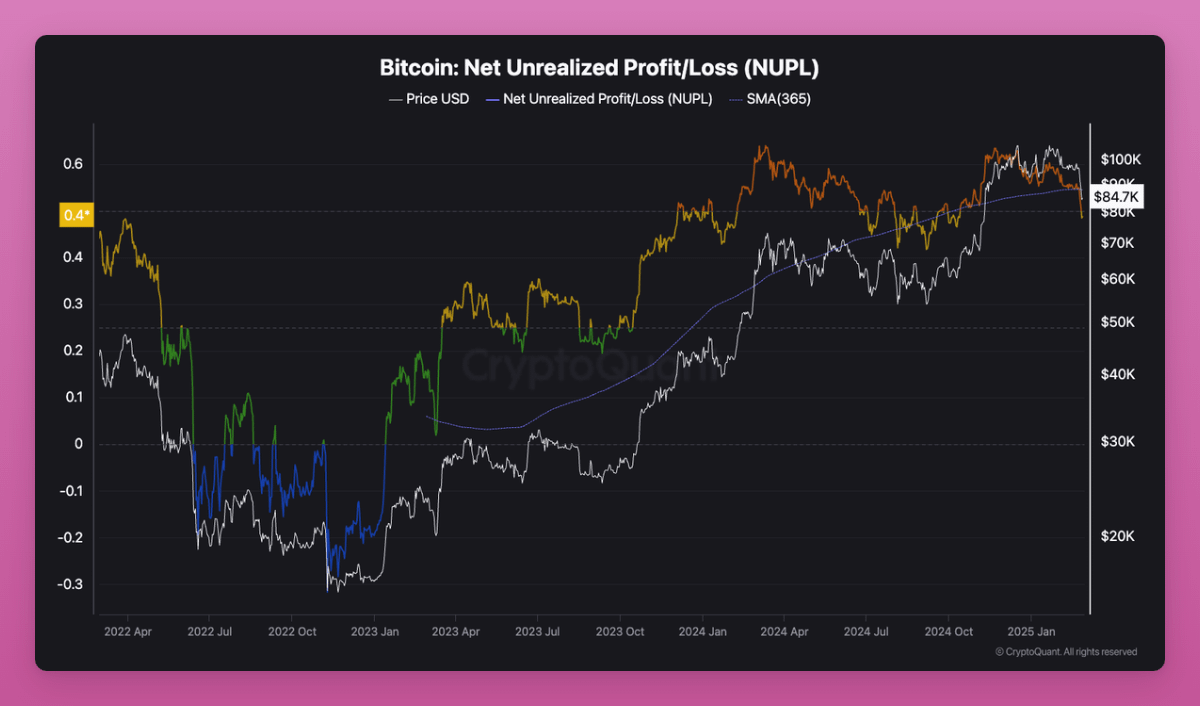
Currently, it is in the optimistic/denial phase (~0.48), indicating that the vast majority of holders are still in profit.
Historically, when NUPL exceeds 0.6, the market usually enters the greed/euphoria phase, signaling the approach of a top.
Long-Term Holder SOPR (Spent Output Profit Ratio)
SOPR tracks the behavior of long-term holders, indicating whether they are selling at a profit or a loss.
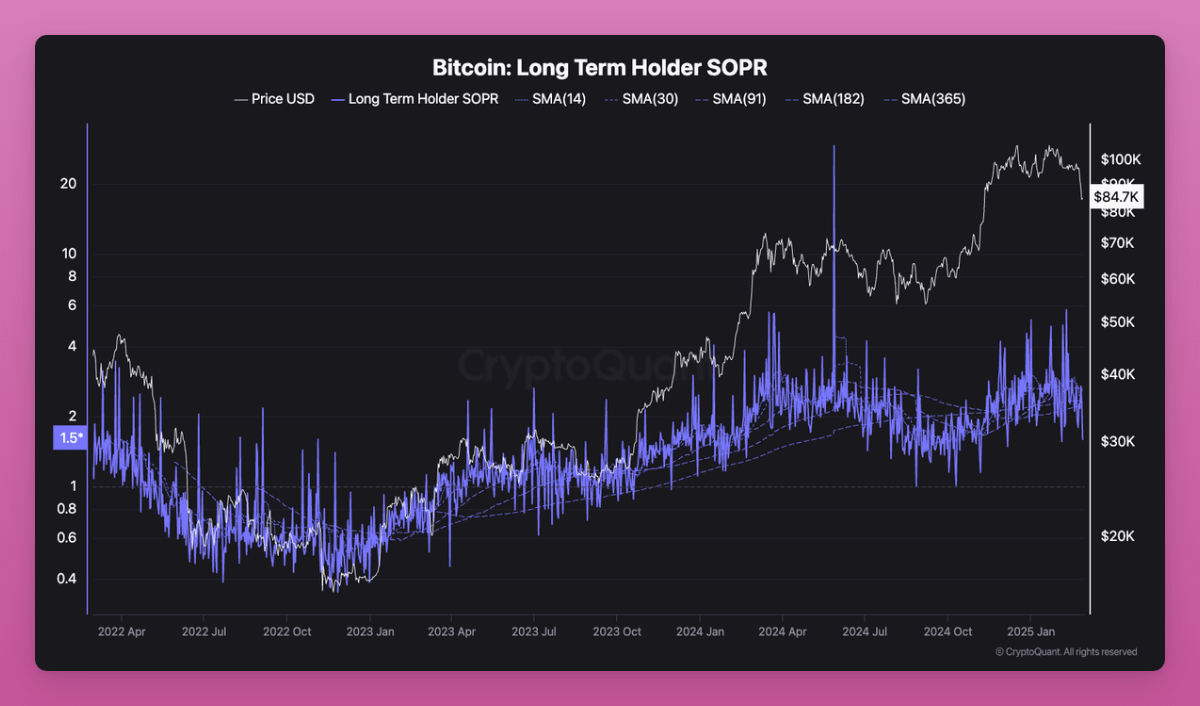
The current value is 1.5, suggesting that long-term holders are taking profits, but the selling is not aggressive.
In a healthy market uptrend, it is normal for long-term holders to continue taking profits.
CryptoQuant P&L Index
This index combines MVRV, NUPL, and SOPR data to assess the overall market valuation.
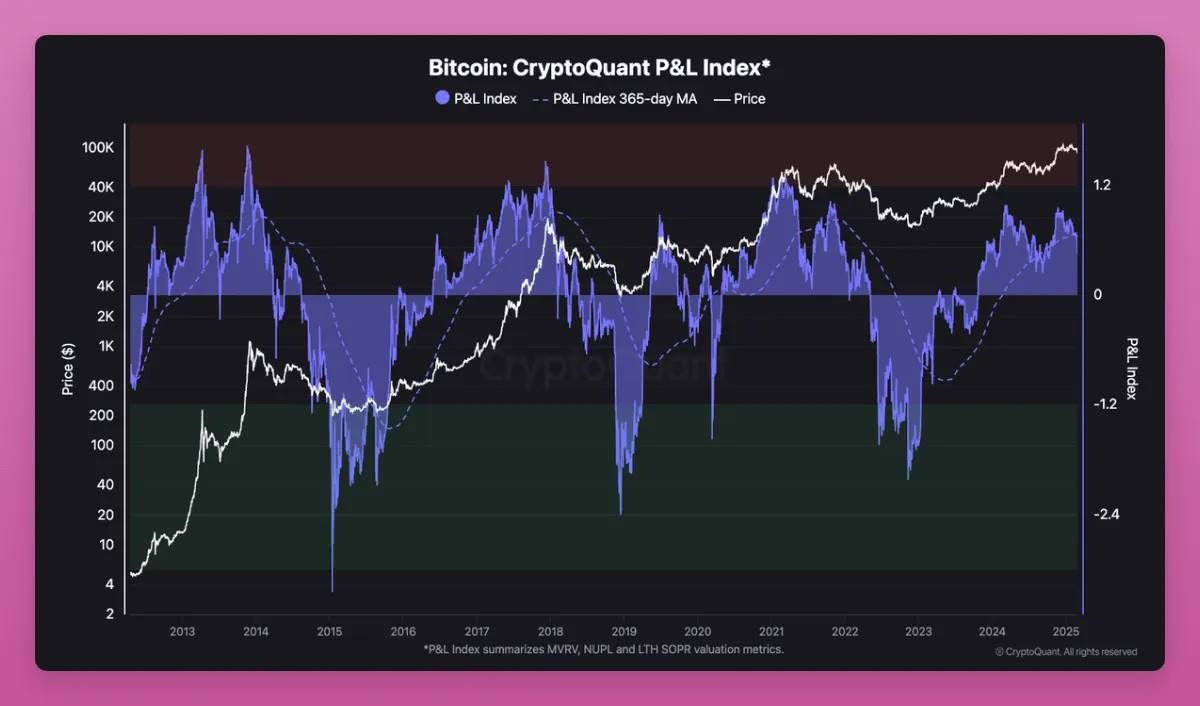
Currently, it is above its 365-day moving average, confirming that the bull market is still ongoing.
When the index exceeds 1.0, it may signal the formation of a market cycle top.
CryptoQuant Bitcoin Bull/Bear Cycle Indicator
If you only focus on one Bitcoin indicator, I recommend this one. It is a momentum indicator based on the P&L index, used to track Bitcoin's bull and bear cycles.
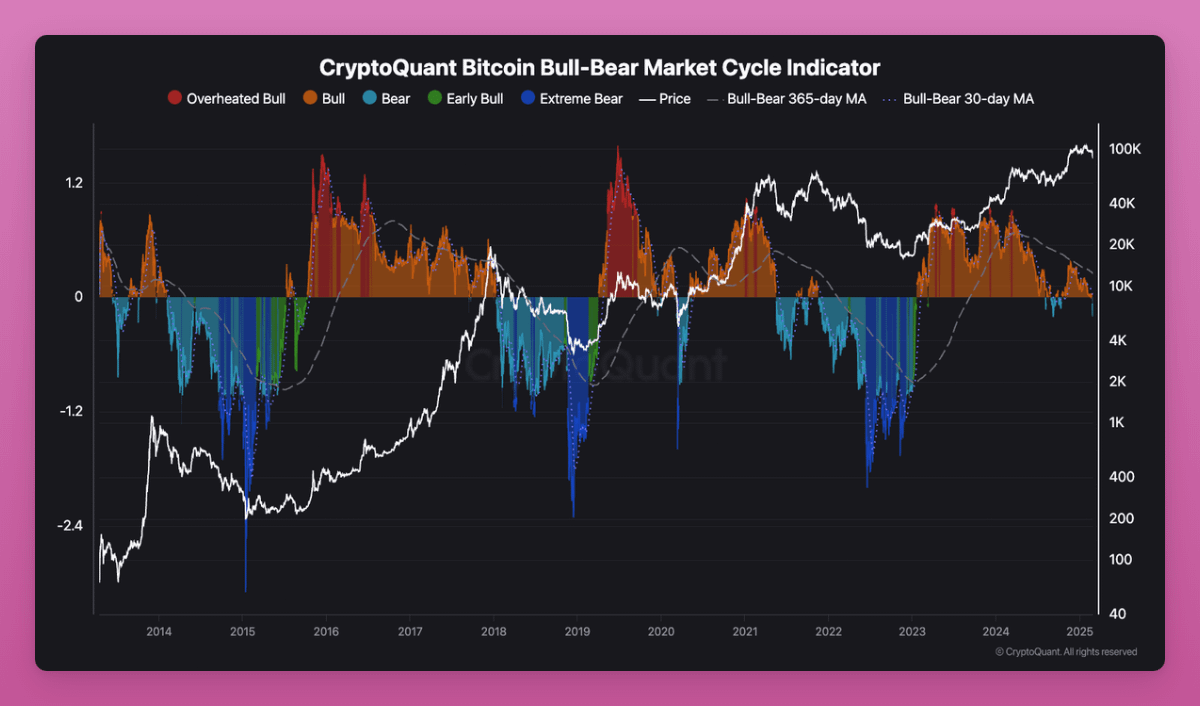
Bitcoin is currently firmly in the bull market zone (orange), indicating a strong upward market trend.
However, it has not yet entered the overheated bull market zone (red), which historically has often marked the top of the cycle.
Summary - What's next?
Bitcoin is currently in the mid-cycle stage of the bull market.
Holders are gradually taking profits, but the market has not yet seen extreme euphoric sentiment.
There is still room for further upside before the price reaches overvalued levels.
If history repeats itself, Bitcoin still has the potential to rise further before reaching the major cycle top.
Interestingly, a chart shared by CZ on X (Twitter) reflects my sentiment about the future direction of the market:
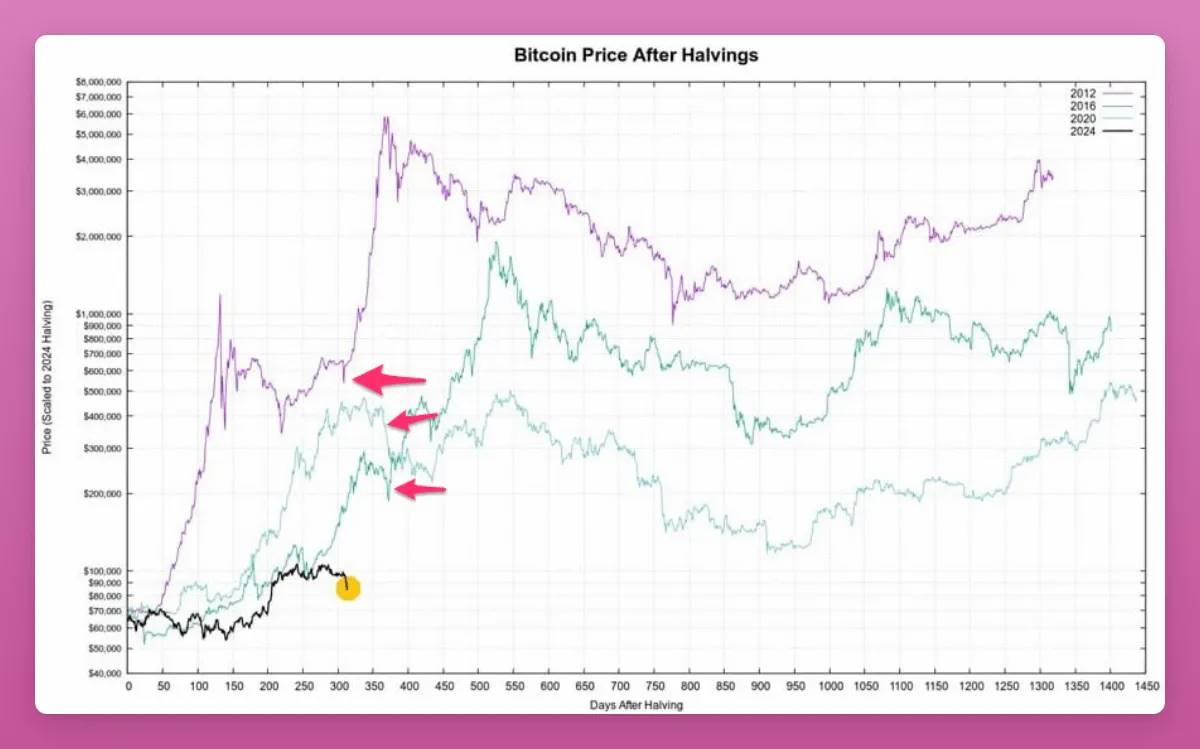
"I don't look at charts, but..." - CZ on X.
Currently, Bitcoin has confirmed its entry into a bull market, but has not yet reached the level of euphoria seen at past cycle tops. On-chain data suggests the market still has upside potential, but some holders have also started to take profits.
The State of Ethereum: Concerning
Over the past two years, ETH has declined 70% against BTC. Just since December 2024, it has already dropped 48%!
Additionally, there are no positive signals in the ETH ETF fund flows.
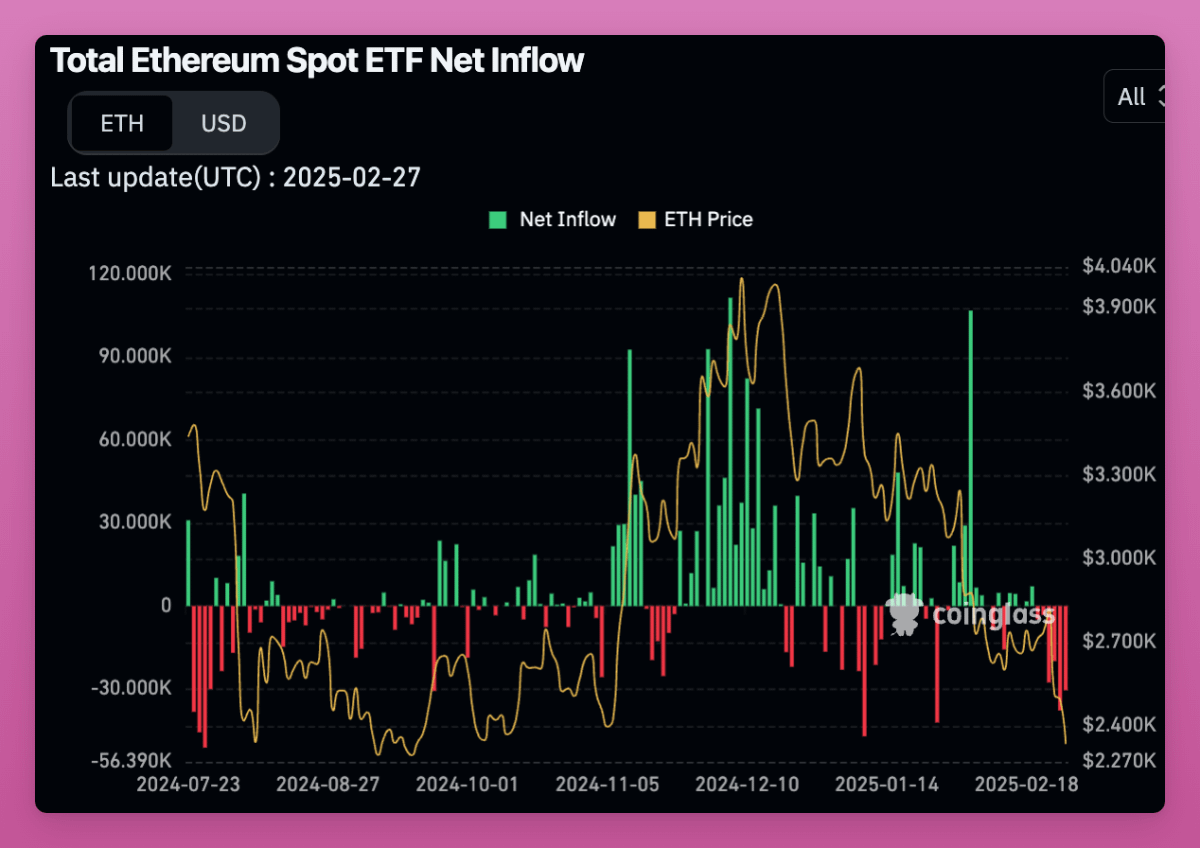
Is ETH the most attractive risk-reward opportunity right now?
I shared some thoughts on X, believing that catalysts for ETH are gradually accumulating:
Changes in Ethereum Foundation (EF) leadership (Aya is leaving, but the new executive director has not yet been announced).
Expansion of L1, although currently only adjusting Gas limits, the shift in mindset itself is significant.
Pectra has released EIP-7702 (simplified approval mechanism) and the EF's Open Intents Framework, which will significantly improve the user experience of L2.
Community interest in memecoins is gradually waning, and more people are focusing on the fundamentals of Ethereum.
The hype around MegaETH shows: 1) people are still excited about innovative L2s, 2) successful L2s further validate the modular vision.
Base announced it will shorten block time from 2 seconds to 200 milliseconds and launch L3 (similar to the MegaETH concept). Although I personally am not a fan of Base.
Ethereum is still the best public chain for asset tokenization, with even BlackRock endorsing it.
The price of ETH has already severely underperformed, it's really very low, haha.
The implementation of L1 expansion may take years, and improvements to the user experience will require the support of multiple partners (e.g., Base has not yet joined the Open Intents Framework).
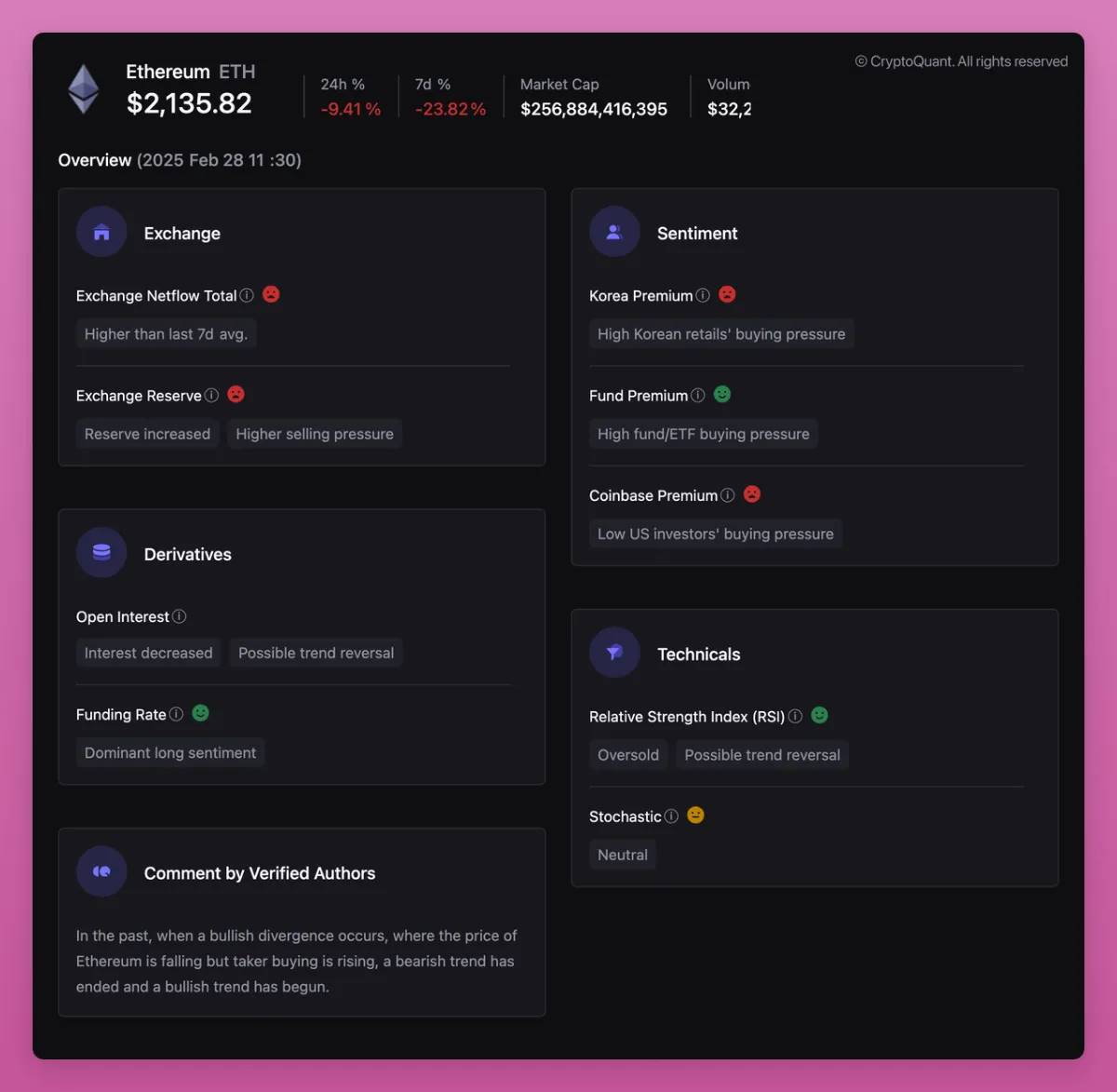
The Future Outlook of Ethereum: Bullish or Bearish?
My biggest concern is that ETH may completely miss this bull market and only become a worthwhile buying opportunity in the next bear market.
However, market sentiment could shift quickly. If the Ethereum Foundation and the broader community can make substantial progress in the following areas:
1) L1 scaling,
2) Significant improvement in L2 modular user experience,
3) The community overcoming the current "loser's mentality",
then ETH could stage a strong rebound and take a dominant position in the latter half of this cycle.
However, currently, the market cap of SOL is only 1/3.8 of ETH, it offers a better user experience, and its "Lindy effect" is strengthening over time (as long as the network remains stable).
These factors will challenge ETH's dominance in the smart contract space.
Altcoins: Indicators to Watch
Robust Speculation Index can measure whether Altcoins outperform Bitcoin across multiple timeframes.
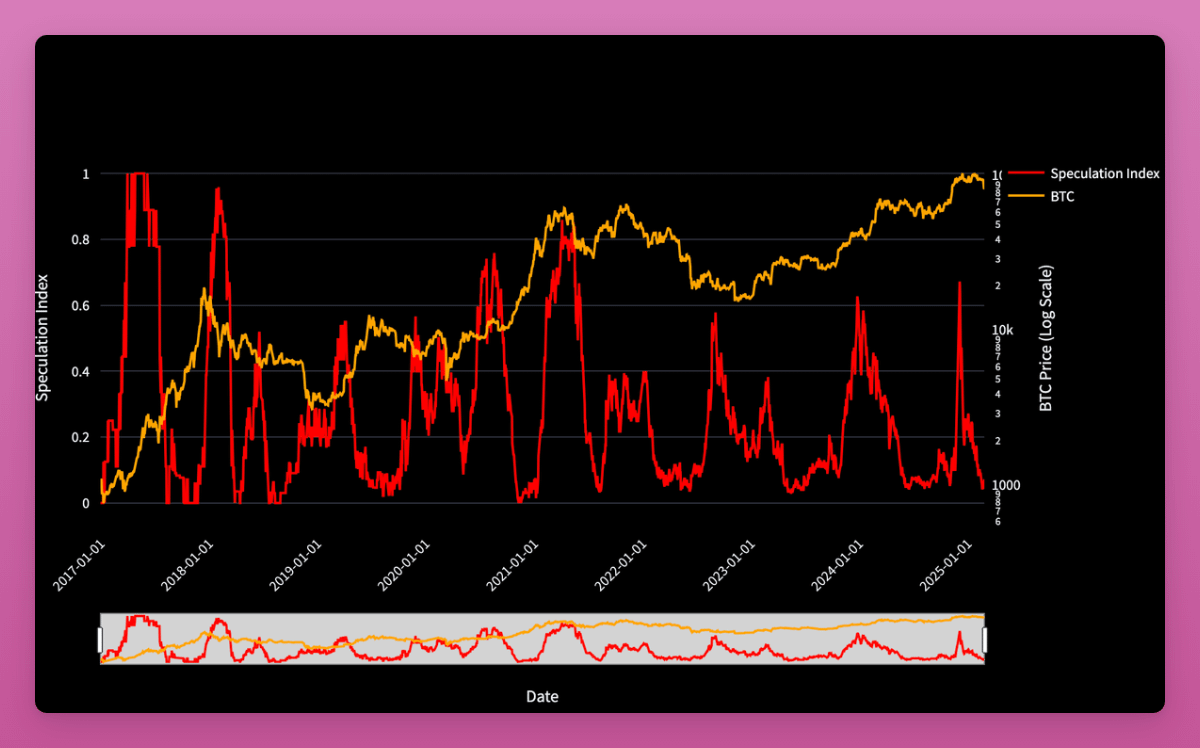
The current index is at a relatively low level (around 0.0-0.2), indicating that Bitcoin has outperformed most Altcoins.
Historically, when speculative activity is at a low point, it often paves the way for an Altcoin rebound.
Aylo shared a similar Crypto Breadth chart on X (Twitter), suggesting that Altcoins may have already bottomed out. If Bitcoin's strength can persist, we may be able to expect an Altcoin rally.
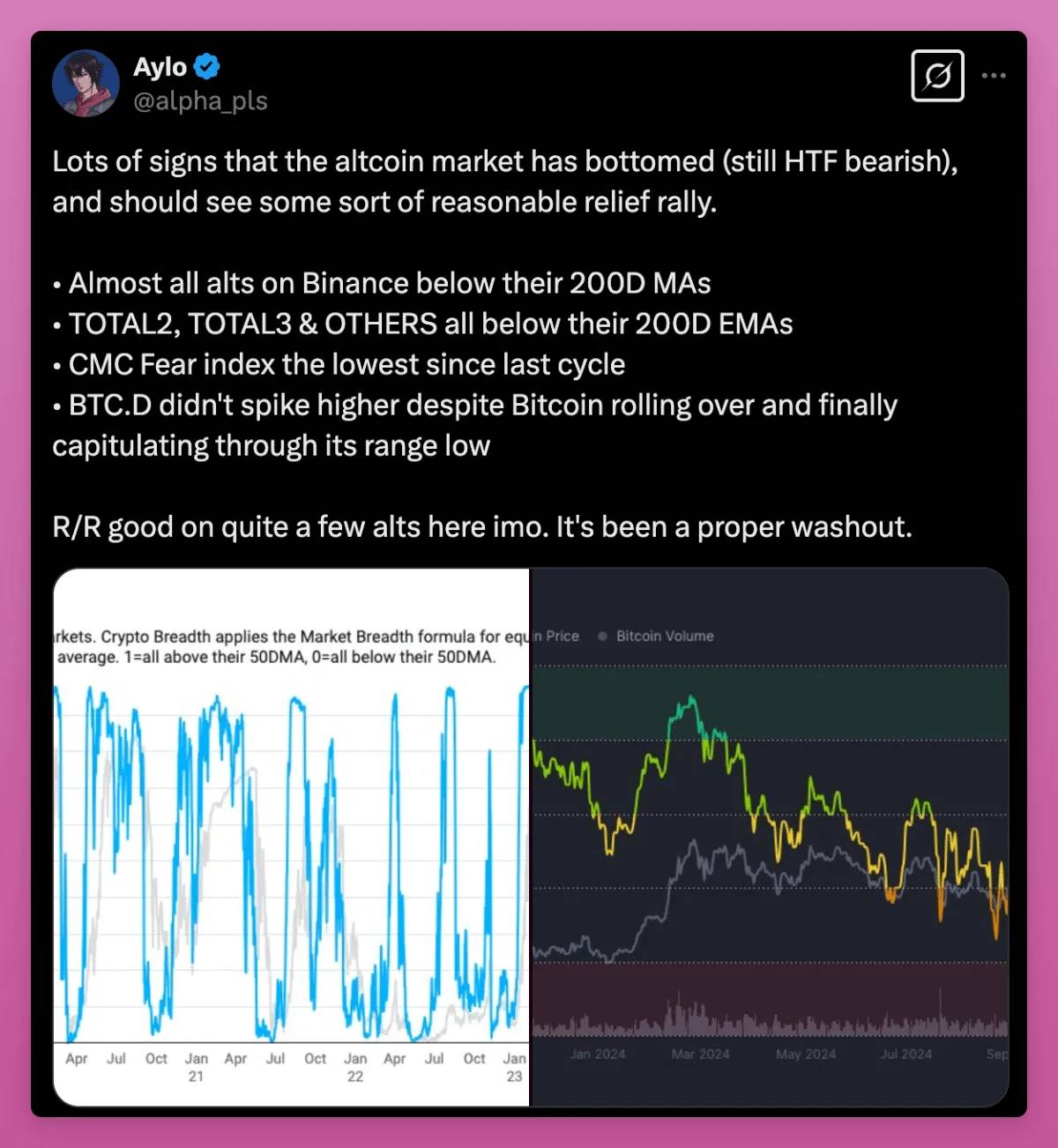
Question: Which Altcoins to buy?
When selecting Altcoins, I will consider the following criteria:
No large-scale token unlocking events in the near term.
Good Product Market Fit (PMF), meaning the product can meet market demand and gain user acceptance.
A revenue-sharing mechanism (such as token buybacks) is an important bonus.
FLUID is a newly launched decentralized lending protocol, but it has already been able to compete with Uniswap in terms of DEX trading volume. Recently, FLUID announced an upcoming token buyback program, which makes me confident about its future development.
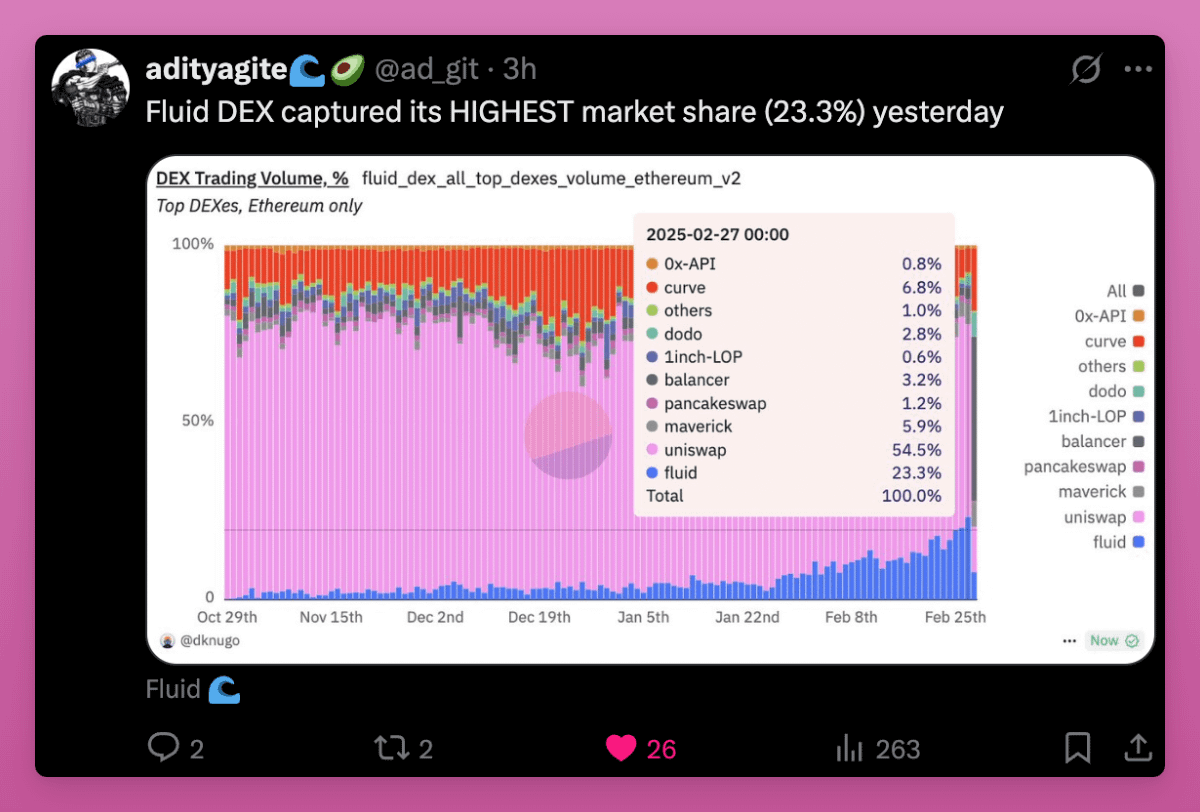
Other Altcoins Worth Noting:
ENA: Successfully weathered the Bybit hack and multiple liquidation waves. Recently completed a $100 million funding round, with a price of $0.4. Furthermore, more and more protocols and CEXes are adopting sUSDe, which makes me very optimistic about its potential. The issue is that ENA's large-scale token unlocking is imminent, which may put pressure on the price.
$SKY (formerly MKR): Taiki's analysis mentioned some highlights:
$30 million monthly token buybacks (about 1.9% of the supply).
USDS (formerly DAI) supply is near an all-time high.
SPK Farming has increased token demand and revenue sources.
Stablecoin regulation could be a positive factor.
$KMNO: Dominates the lending market on the Solana chain, with a TVL of $1.8 billion and a market cap of only $85 million, suggesting it may be undervalued. The issue is that Solana chain users are more traders than yield farmers, but this situation may change over time.
Sonic's $S: Its DeFi ecosystem is rapidly expanding (including the deployment of key protocols like Aave), and it also has a 200 million $S airdrop plan, a great user experience, and growing attention on X. More importantly, there are no large-scale token unlocking events, providing a more stable price foundation.
HYPE: There are many discussions on X about its excellent token economics and strong community, worth keeping an eye on.
PENDLE: When the market starts to focus on fundamentals and speculators seek yield, Pendle is a very promising choice.
AAVE: Undergoing token economic adjustments, with the 3.3 upgrade bringing stronger revenue performance.
What else have I missed?
Additionally, I am very excited about the upcoming token airdrops of MegaETH, Monad, Farcaster, Eclipse, Initia, Linea, and Polymarket.
Macroeconomic Environment
I firmly believe in the value of Bitcoin as digital gold. Compared to gold, Bitcoin supports self-custody and has stronger transferability, making it more attractive.
The current macroeconomic environment provides an excellent testing ground for Bitcoin: tariff policies, wars, fiscal deficits, massive monetary expansion... All of these provide potential tailwinds for Bitcoin.
In my 2025 blog post "The Truth and Lies of Cryptocurrencies", I quoted BlackRock's research: Bitcoin may experience sell-offs in the initial stages of major macroeconomic events. However, chaos, uncertainty, and potential monetary expansion will ultimately provide strong support for Bitcoin.
Current Market Observations
I believe the current market volatility is due to Trump's sudden departure from the established global order. This uncertainty has led to short-term panic in the markets. However, people will gradually adapt to these new global realities.
Fundamentally, the world has not undergone any real changes that would undermine the fundamentals of cryptocurrencies. On the contrary, we see more and more positive news every day: The SEC has withdrawn some lawsuits against cryptocurrencies, introduced new cryptocurrency bills, and the government's overall attitude towards cryptocurrencies is gradually becoming more positive.
However, a point raised by Ansem is worth noting: When good news fails to drive price increases, it is actually a bearish signal. This suggests that the market may need some time to digest and adjust to the current situation.
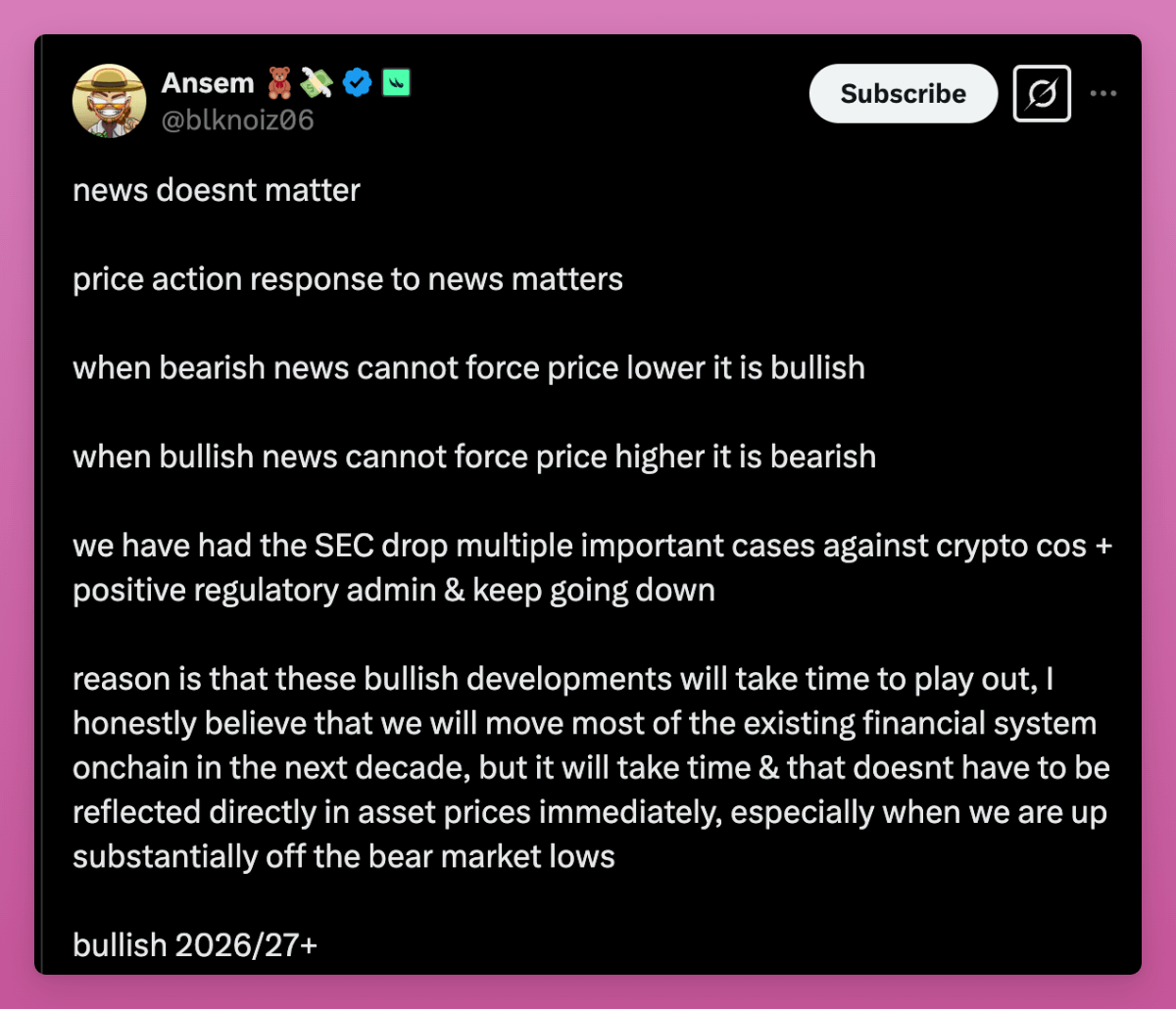
Nevertheless, I still hope the market's adjustment can be faster than his optimistic prediction for 2026/27.
If Raoul Pal's analysis and charts are correct, Bitcoin's price should catch up with the growth trend of the global M2 money supply before 2026. M2 is an important indicator of global money circulation, and if Bitcoin can match it, it will further solidify its position as "digital gold".
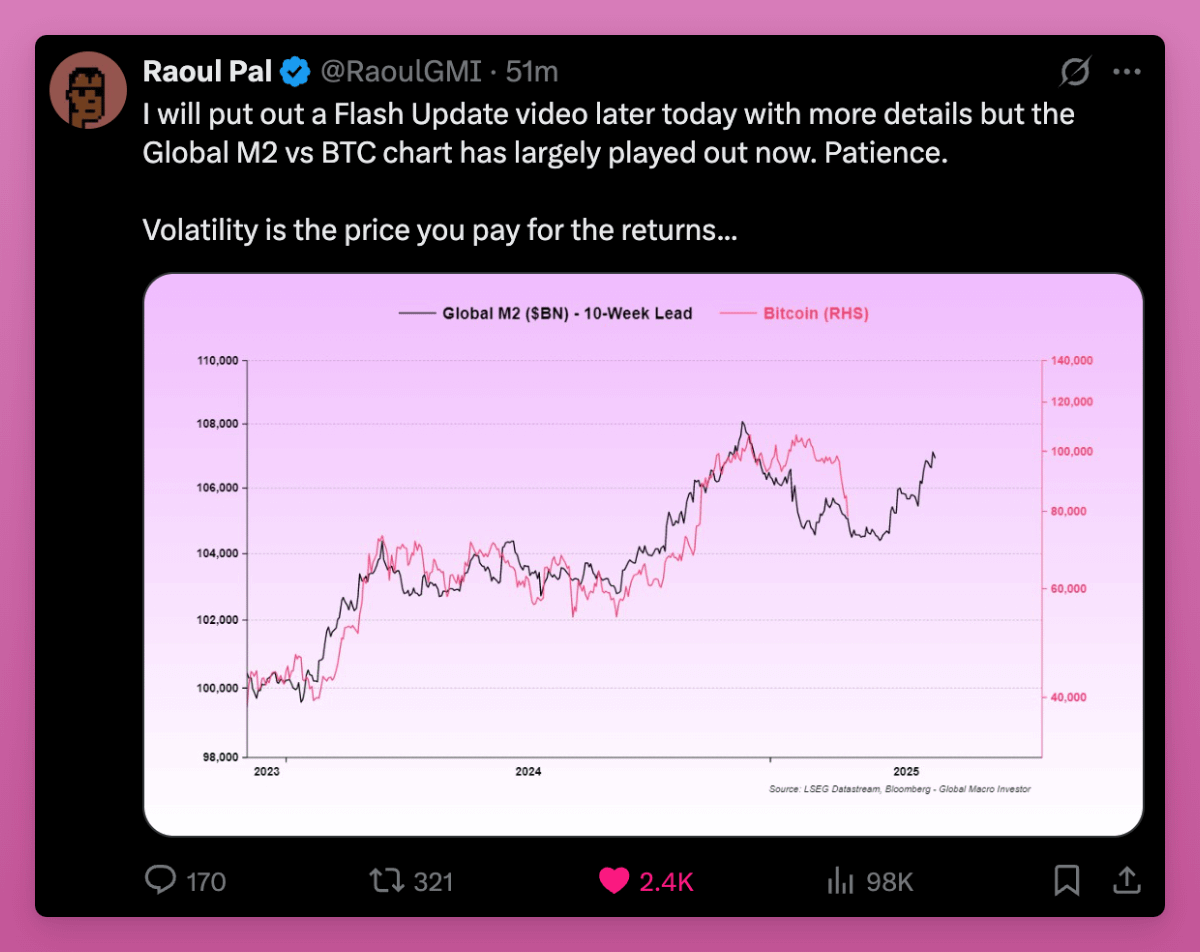
Conclusion
In summary, I remain confident in the cryptocurrency market and believe that with patience, the rewards will ultimately be reaped.








